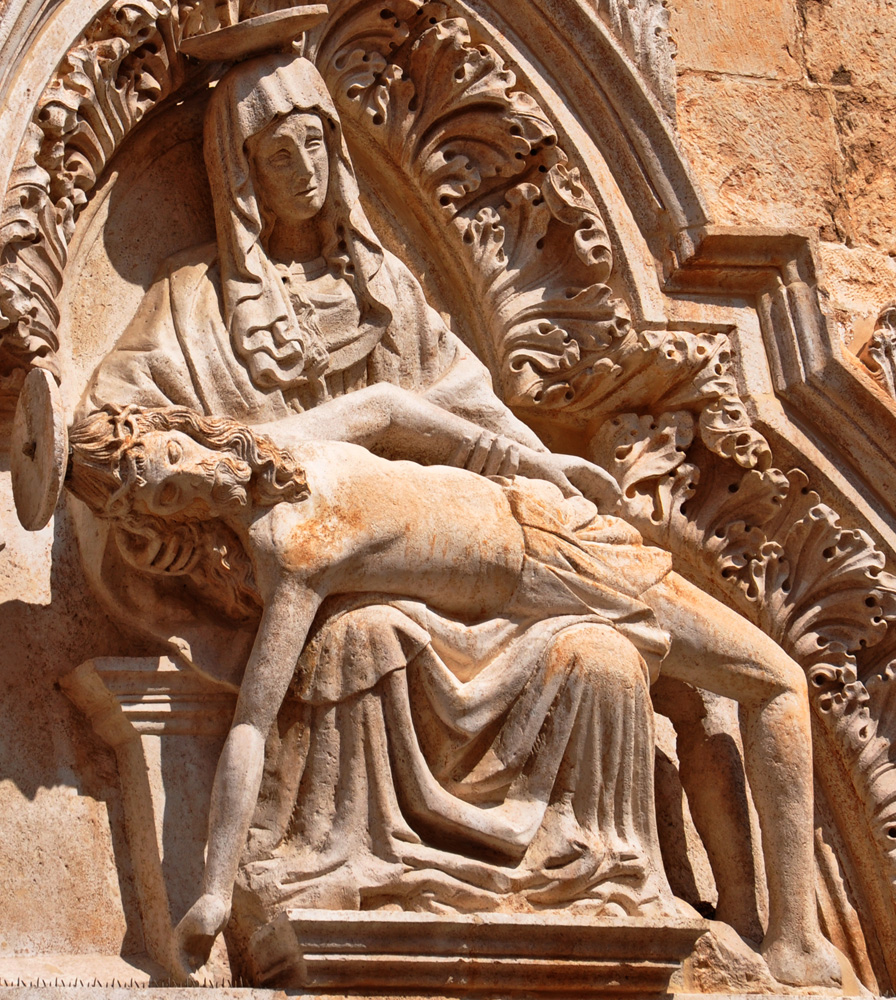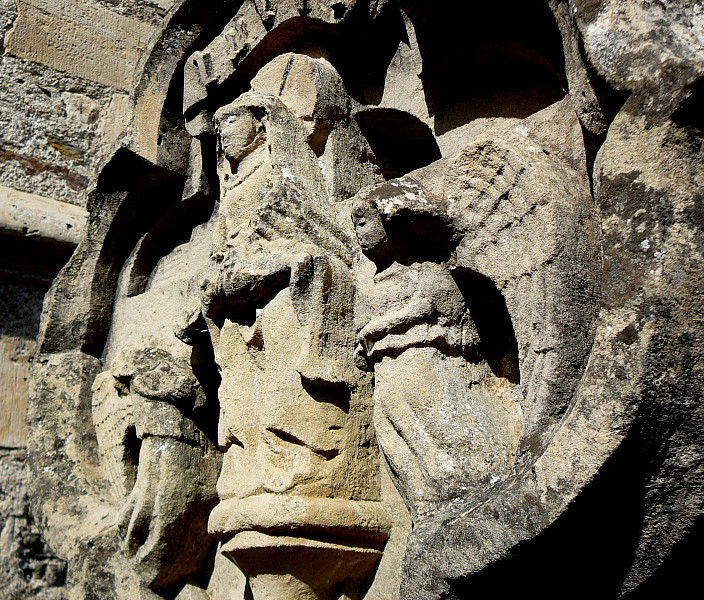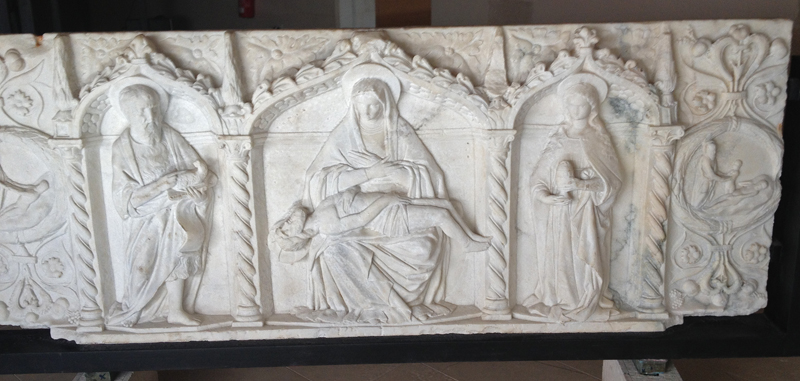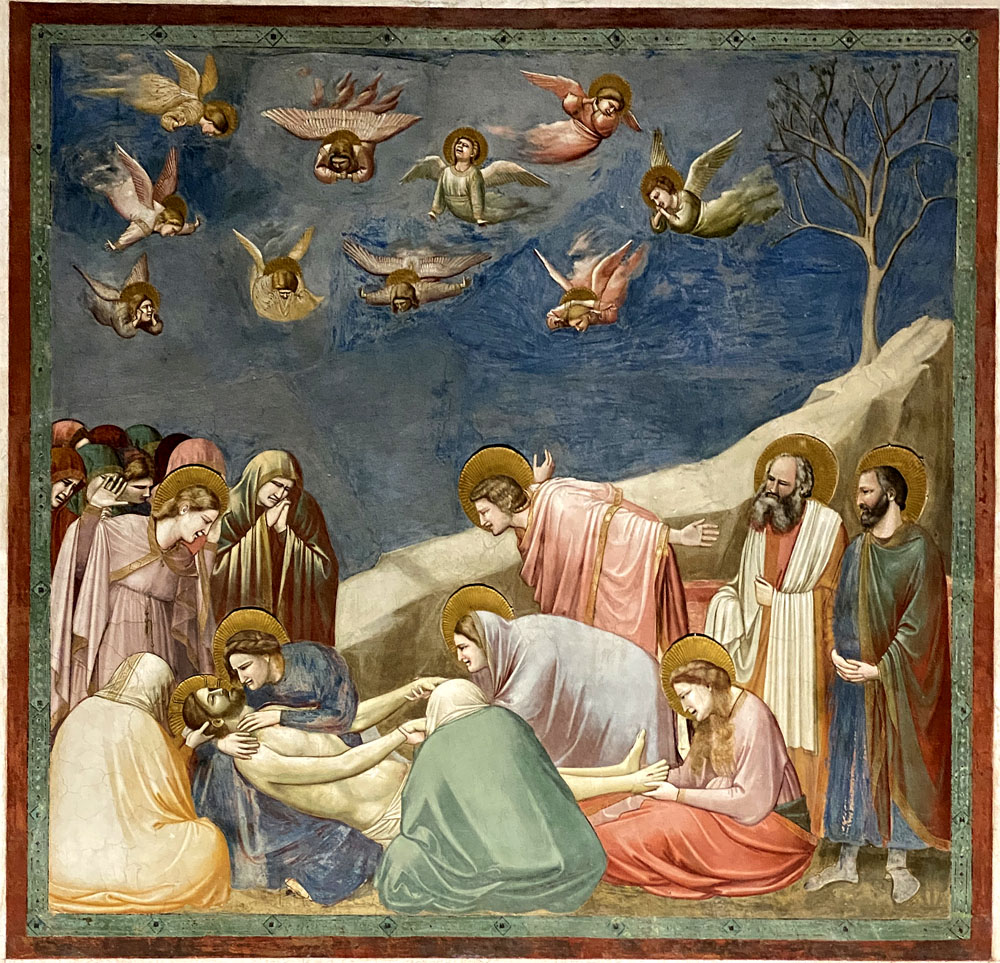Lamentations almost always include the Virgin Mary among other mourners, although this painting by Bellini has St. Mary Magdalene instead. The Magdalene is almost always included among the mourners, sometimes posed at Jesus' feet as in the picture above. St. John is also usually pictured. Others may include Joseph and Nicodemus, the various Mary's mentioned in the Passion narratives, and the "daughters of Jerusalem" whom Jesus addressed on the way to Calvary.2 In the picture above, Giotto includes all of these – the two officials are on the right, the daughters of Jerusalem are on the left, and John and the Mary's are ranged around the body. Reminders of the Crucifixion itself may also be included, as in Messina's painting.
It is usual for a Pietà to show the traditional five wounds on the hands, feet, and chest (example). This late example also portrays bloody knees, presumably scuffed from the three falls imagined in 19th-century Stations of the Cross.
Sometimes Mary is posed standing up, with just one arm holding up the body (example). The second picture at right is an unusual variation in which she seems to have replaced her son on the cross.
Prepared in 2016 by Richard Stracke, Emeritus Professor of English, Augusta University.
HOME PAGE
Giotto's fresco of the Lamentation in the Scrovegni Chapel. See the description page.
OTHER IMAGES

A Pietà on the main street of Dubrovnik, Croatia – See the description page

Reverse face of a wayside cross in France, – See the description page

This frontal echoes the horizontal Christ of The Pietà with images of God lifting Eve from out of Adam's recumbent body and Adam himself from the clay of the earth. See the description page.
MORE IMAGES
- 14th century: A small Pietà from a Swiss convent.
- 1375-95: Gaddi's Pietà e Santi.
- 15th century: A Pietà panelin a Spanish.
- 15th century: Michelangelo, Pietà.
- 15th century: The right-center panel of an altarpiece in Salamanca is a Pietà in a pastoral landscape.
- 1400-1410: A Spanish Pietà with an unusually young and confused Mary.
- 1480-89: Sculpture Group of the Lamentation and Pietà in Oviedo Cathedral.
- 1593: Il Gaetano, The Lamentation follows John 19:38-39 in including both Nicodemus and Joseph of Arimathea.
- Beginning of the 17th century: In Savoldo's Lamentation Mary dries her cheek with a cloth.
- 17th century: Bernini, Pietà.
- 18th century: A Pietà in an Italian oratorio.
- Sculpture group in a church sacristy: just two heads make a powerful tabletop Pietà.
ALSO SEE
NOTES
1 Joseph of Arimathea, "a distinguished member of the council" (Mark 15:43), is identified in all four gospels as the one who went to Pilate for permission to take down the body. Nicodemus is named as helping Joseph only at John 19:39-40. He is identified as "a man of the Pharisees…a ruler of the Jews" at John 3:1.
2 Jesus addresses the "daughters of Jerusalem" in Luke 23:27-31. Various women named Mary are mentioned at the Cross and/or the tomb in Matthew 27:56,61; Mark 15:40,41,47; and John 19:25.
